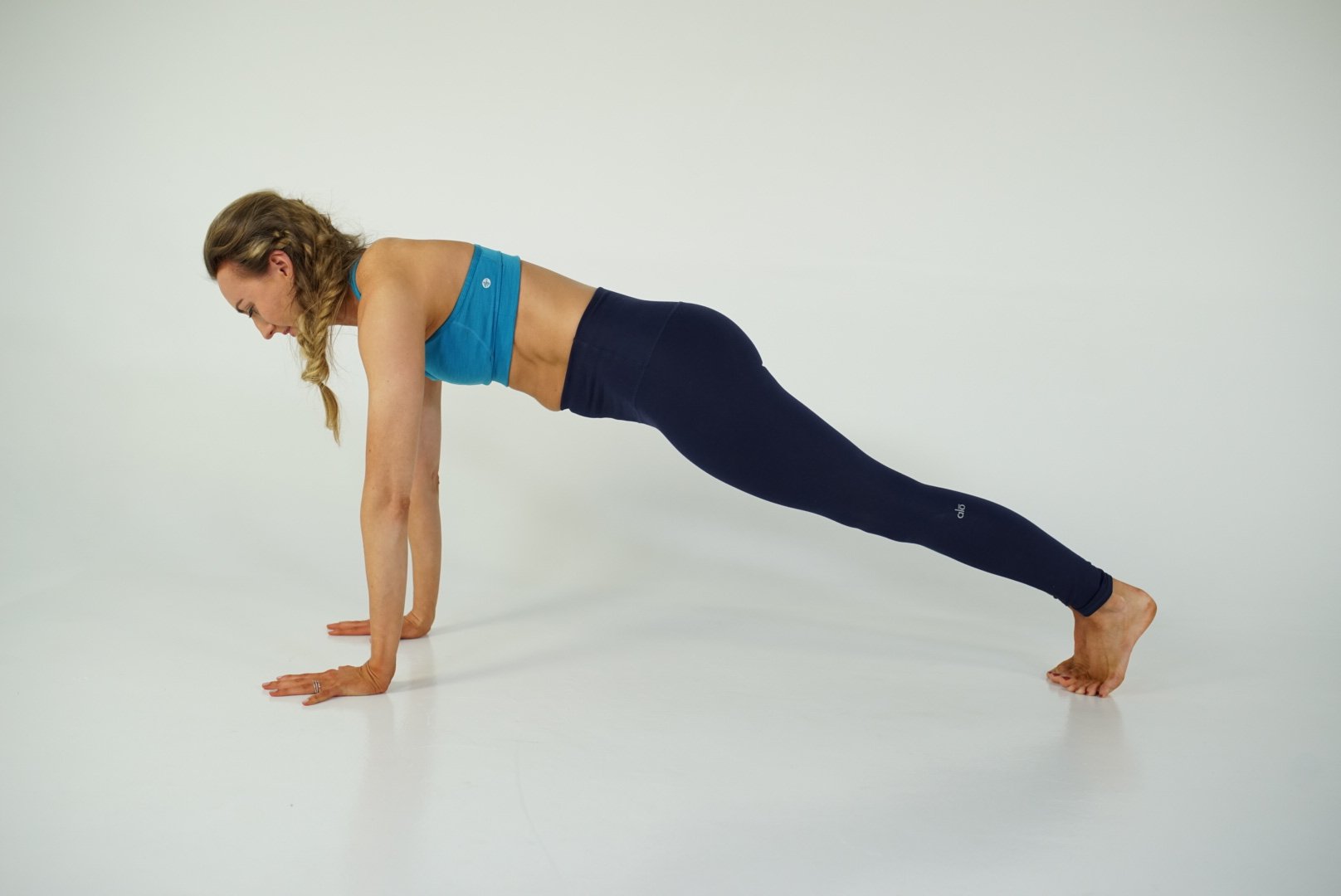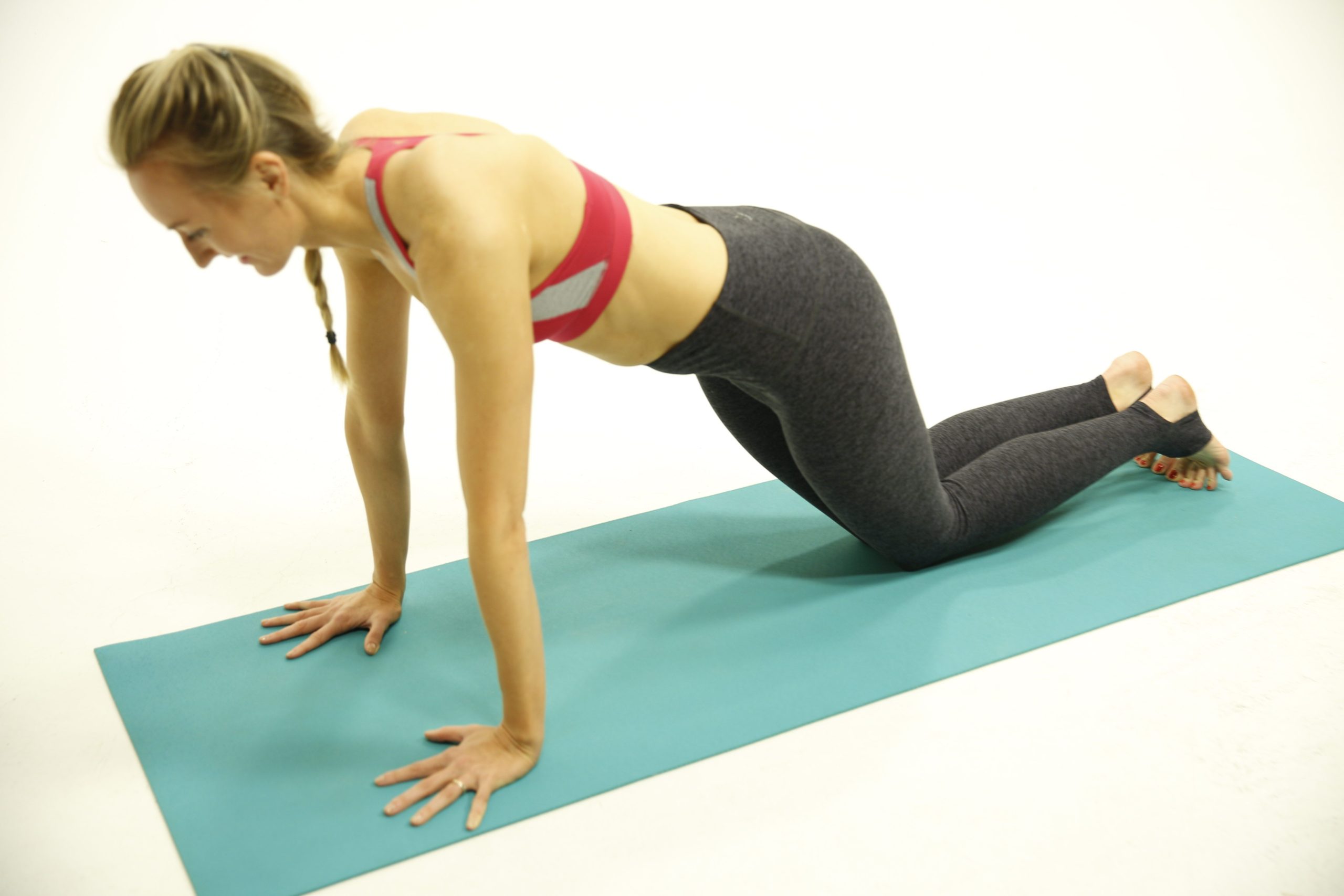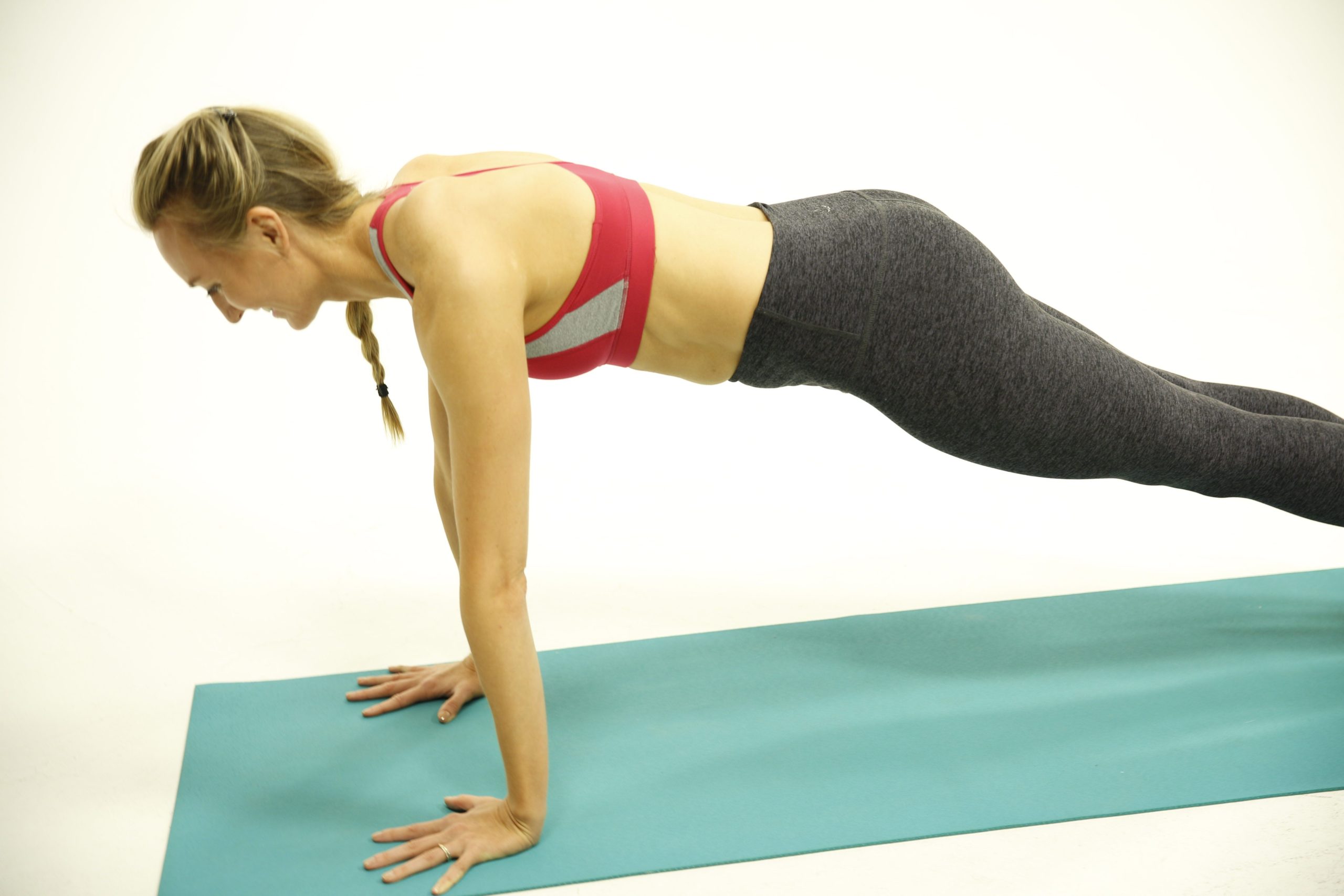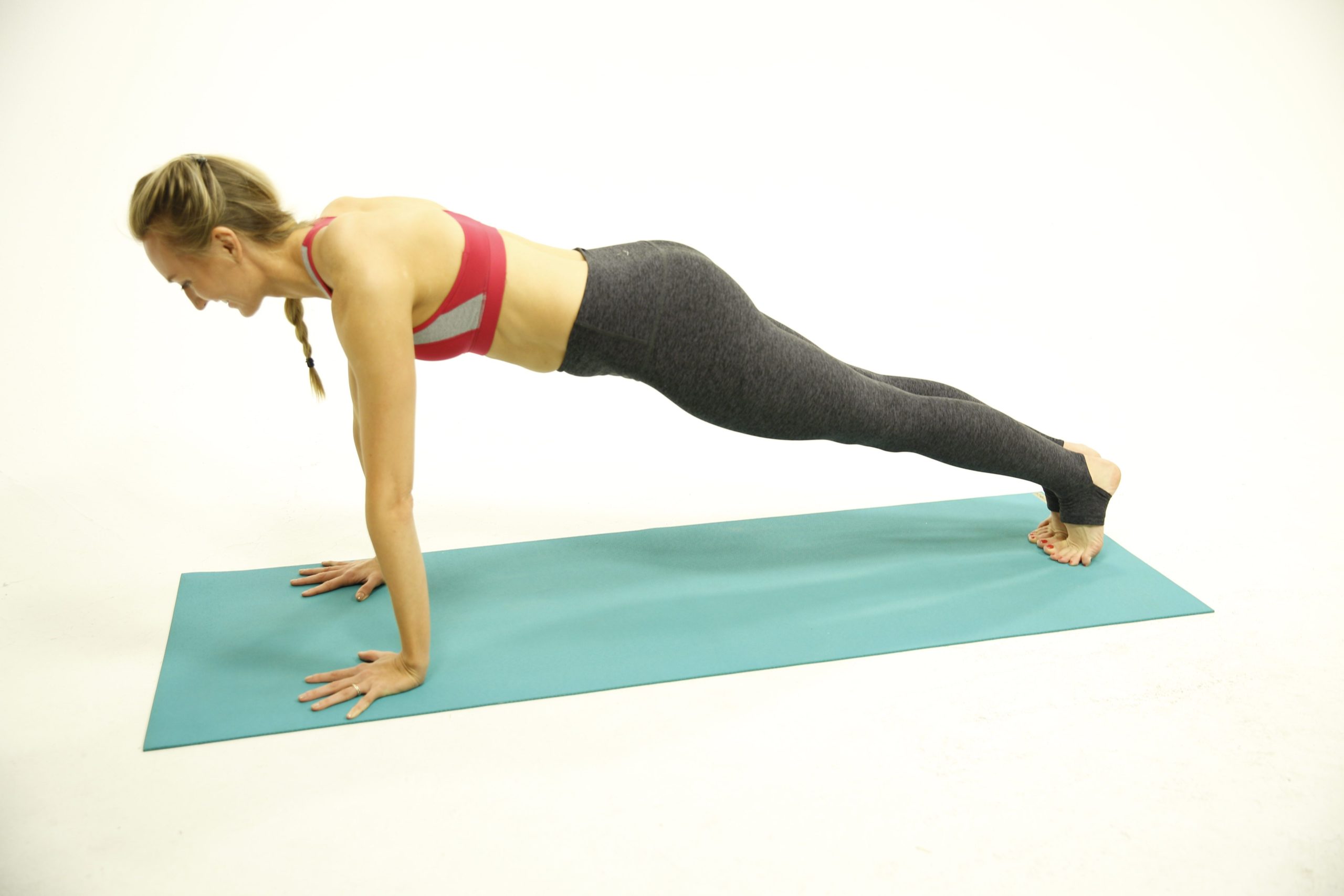(Phalakasana): Techniques, Benefits, Variations

Plank Pose Prep & Practice
1
Beginning in Downward Facing Dog (Adho Mukha Svanasana), on an inhalation shift forward, stacking shoulders over wrists, feet in neutral, pressing back energetically through the heels.
2
Ankles, knees, and hips face the floor, thighs hug in toward one another in a slight internal rotation, kneecaps gently activate and lift.
3
Hip points level and square to the floor, front ribs knit in as tailbone lengthens toward heels.
4
Side bodies lengthen away from hips, shoulders draw down and back, chest widens and heart shines forward.
5
Weight evenly distributed in both hands, wrist, elbow and shoulder joints in line. Head is a natural extension of the neck, neck and jaw relaxed.
6
Breath is steady, legs, abdominals and arms energized and engaged, energy out the heels.
7
To come out of the pose, on an exhalation lower the knees onto the mat and rest in Child’s Pose (Balasana).



Variations/Modifications
- Place knees on the floor
- Squeeze a block between the thighs
- Use a strap around upper arms
- Wedges under wrists or come onto forearms (wrist injuries)
Physical, Mental and Emotional Benefits
- Increases core strength
- Aligns the joints and strengthens the muscles of the wrists, arms, shoulder girdle, ankles hips and knees
- Promotes a positive mood
- Encourages good posture
- Relieves lower back pain
Contraindications
- Wrist Injury (see modifications)
- Shoulder Injury
- Carpal Tunnel Syndrome
- Overall weakness
Thoughtful Sequencing
Downward Facing Dog (Adho Mukha Svanasana), Plank, repeat 3X, Hold Plank, Rest in Child’s Pose (Balasana). Repeat sequence 3X.
Try Plank Pose On The Blog
- Yoga Core Strengthening Exercises for Beginners That Anyone Can Do [+Videos]
- Wanna Try Yoga for Weight Loss? Read This First [Top Yoga Poses + Video]
- How to Do A Handstand For Beginners
- Surya Namaskar: A Step-By-Step Guide to Sun Salutations (For Beginners!)
- What is a Yoga Wheel? (+7 Best Yoga Wheels to Choose From)
A Few Notes
Plank pose is an important piece of the sun salutation, but it’s also fabulous for strengthening and aligning your form when practiced alone. Plank might look intimidating – and yes, it can be a challenge! – but there are several ways to adapt it to various bodies and abilities to empower the mind and body.
This pose works all those deep core muscles that support the spine and posture. Building strength around the postural muscles helps to relieve low back pain, which is one of the most common complaints for yogis seeking relief through yoga. Plank also taps into our solar plexus chakra, the energy center for confidence and personal power.
When practicing plank pose, focus on setting up your foundation and aligning joints. Anchor the balls of your feet and ensure that your feet, ankles, knees and hips all make one line in the full extended variation of the pose. Place your hands under your shoulders, forming another line with the wrists, elbows and shoulder joints. Be sure to maintain a little bend in your elbows to reduce strain on your joints.
Press the ground away with your hands as you hug the abs in to lift everything up and away from the mat in one long line. Yes, it’s all about the lines! Now, hug your thighs towards each other and activate your front leg lines by gently lifting your kneecaps. Aim your hip points towards the earth as you think of reaching your tailbone towards your heels. Draw the front ribs up and in too. Then, lengthen the spine from the tailbone through the neck.
Reach the heart forward and keep the shoulder blades soft on your back. Let the shoulders find neutral, not too high, not too low. Keep the head in that long line and relax the neck and jaw.
To decrease pressure in the wrists, spread your fingers out as broadly as possible and then try to distribute the weight evenly across your hands. Activating hasta bandha by gently cupping the hands can also improve shoulder engagement and direct energy into the ground. Sometimes it helps to think of holding a fuzzy caterpillar under the center of the palm: You want to be able to feel the fuzz, but you don’t want to hurt the caterpillar!
To prevent wrist pain, you can use yoga jellies or wedges under the wrists to decrease strain on the joint. If wrist pain persists, opt for a forearm plank instead, maintaining a firm line with the shoulders over the elbows.
If plank is a challenge on any given day, you can always drop the knees to the mat. Be sure to still find a long line in the spine and in the arms as you engage the core. You’ll still get the same solar plexus chakra love and strength building!
One of my favorite ways to customize plank is to use a wall. You can play with how close or far the balls of your feet are from the wall. Then anchor your hands on the wall in line with your shoulders. This allows you to control the angle of that long line we keep talking about and build strength at the same time!
Enjoy your plank, celebrate your confidence and strength and stay empowered!
Want more yoga pose tutorials? See more in my Yoga Pose Directory.
Learn how to do 11 of the most popular yoga poses correctly. Free video + PDF download.










